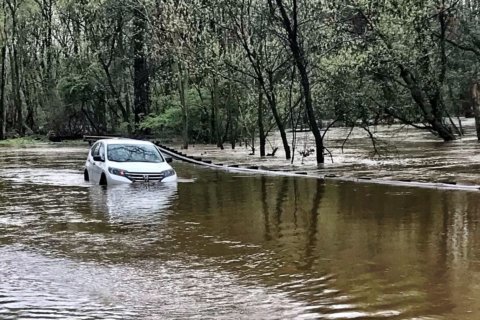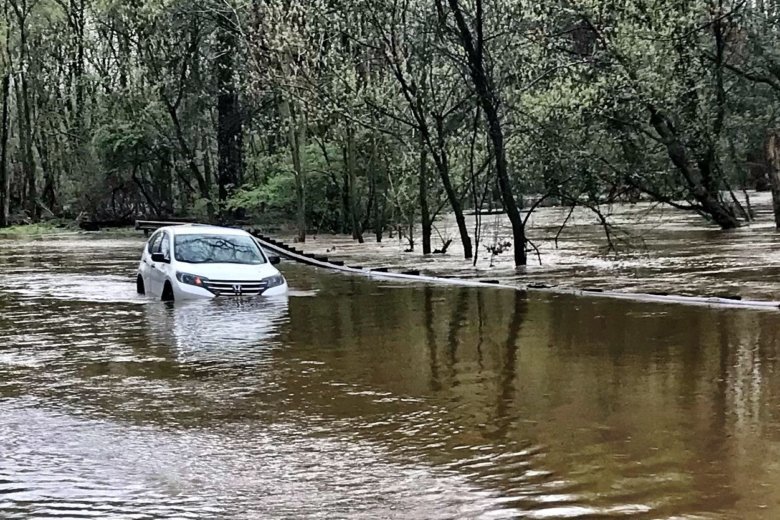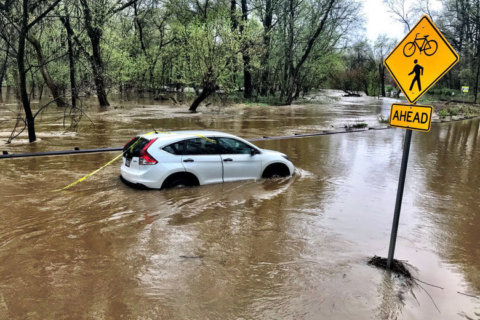
WASHINGTON — Hours after torrential overnight rains, first responders in the region have been rescuing drivers from cars stranded in water.
Flash flooding happens often after major rain storms, though the number of water rescues was high Monday morning, said Montgomery County Battalion Fire Chief Kelvin Thomas.
“That rain water has to run off and go somewhere,” said Thomas. “Typically, it will go into water management systems, streams, lakes and creeks.”
By daybreak Monday, much of Rock Creek — which runs from Maryland into the District, to the Potomac River — was well above its banks.
In Kensington, Maryland, just outside the Capital Beltway, Rock Creek had spilled over Rock Creek Park, completely covering Beach Drive in several feet of water.
Two cars remained half-submerged on Beach Drive late Monday morning, visible only from their tail lights up.
Montgomery County Fire and Rescue assisted in getting the drivers to safety.
As the name suggests, flash flooding can happen quickly.
“You can be driving along a roadway, next to a creek, and see no water on the roadway, and within seconds, the road could have several inches of water on it,” said Thomas.
In fact, roadways can flood quickly, even if there is no water source nearby.
“Low-lying areas are of concern, when we have these massive rainfalls in a short period of time,” Thomas said.
Why would a driver choose to try to ford a road with water covering it, ignoring the “turn around, don’t drown” mantra repeated by first responders?
“You would think in most cases it would be fairly obvious,” said Thomas. “Sometimes drivers are just overconfident, and think they can drive through it — and they get in trouble.”
A few inches of water under a car’s wheels can cause it to hydroplane.
“When you’re getting into several feet of water, it can get into the engine, suffocate the motor, and shut the motor off.”
Which can leave the driver in a potentially deadly situation, surrounded by water.
Drivers should not attempt to open the car door once the water has started to rise, Thomas said.
“The water may seem calm at the surface, but it may have an undercurrent,” he said. “The best thing to do is call 911, remain in your vehicle, give a good description of your location, so that fire and rescue folks know exactly where you are.”









